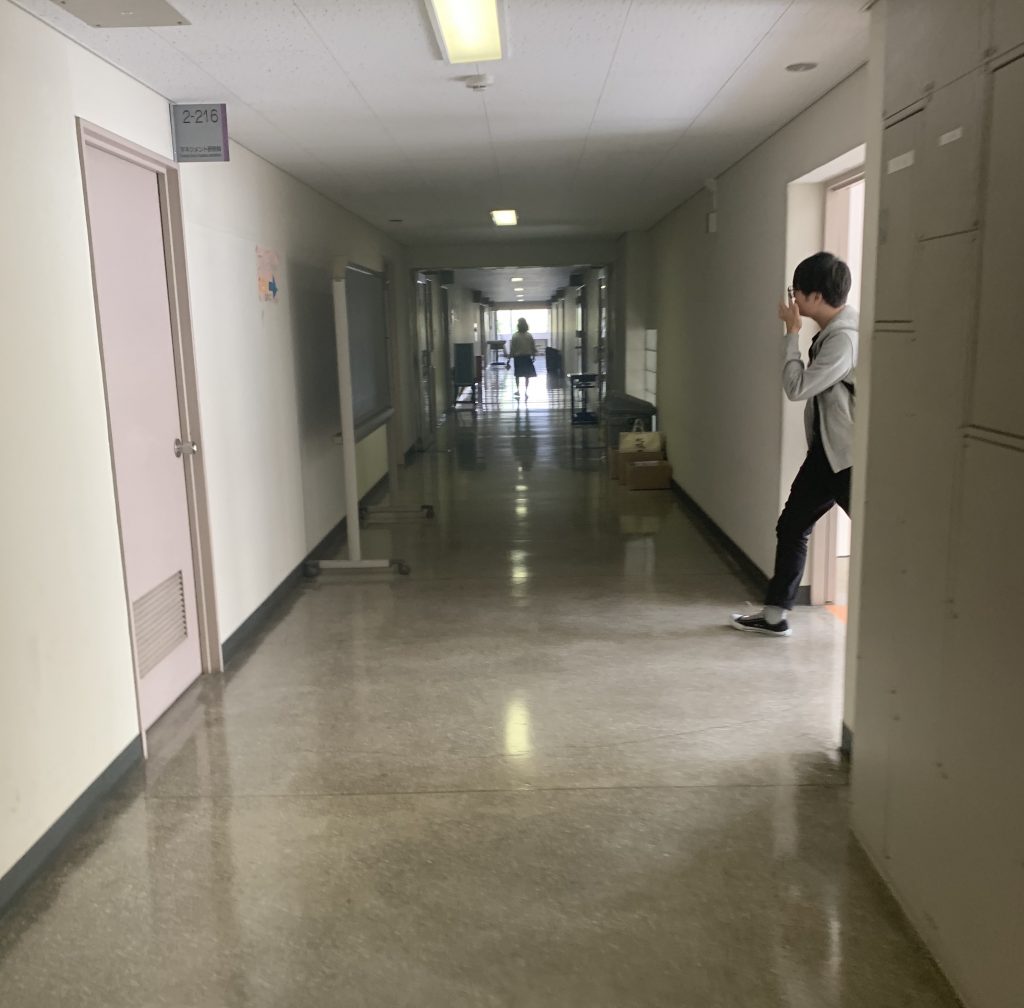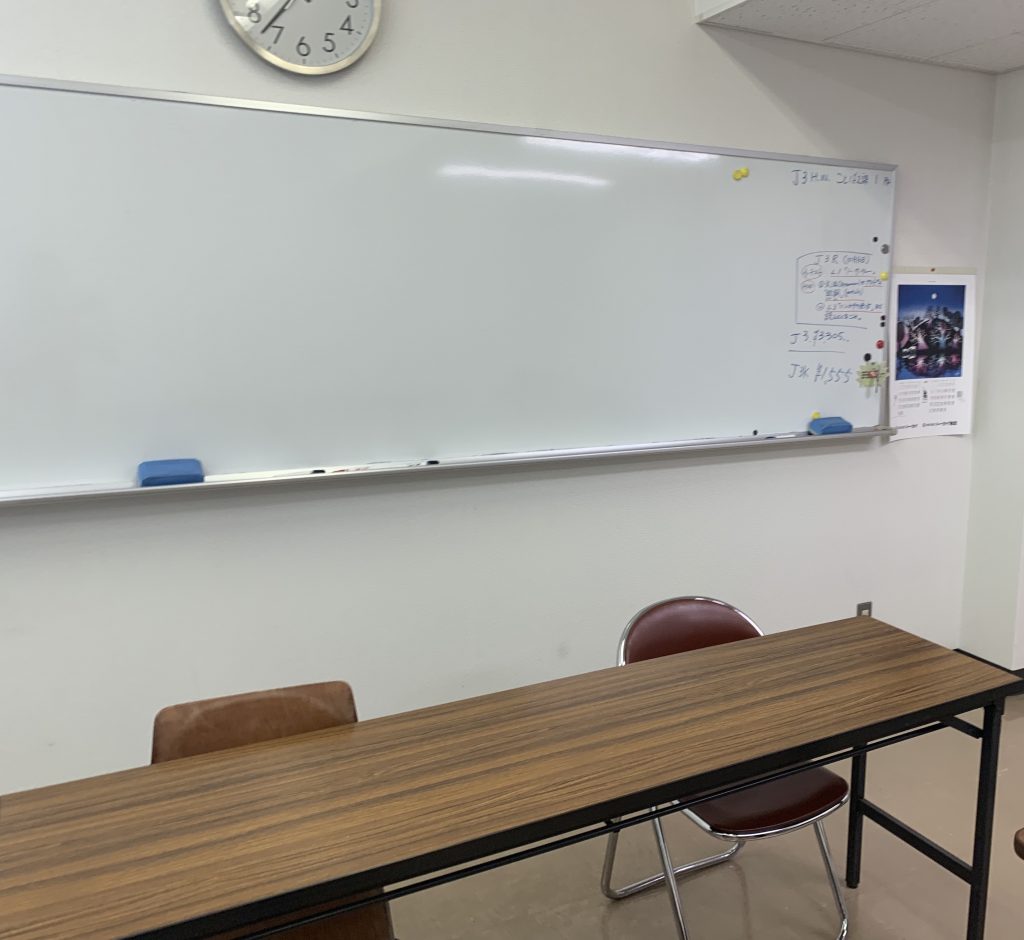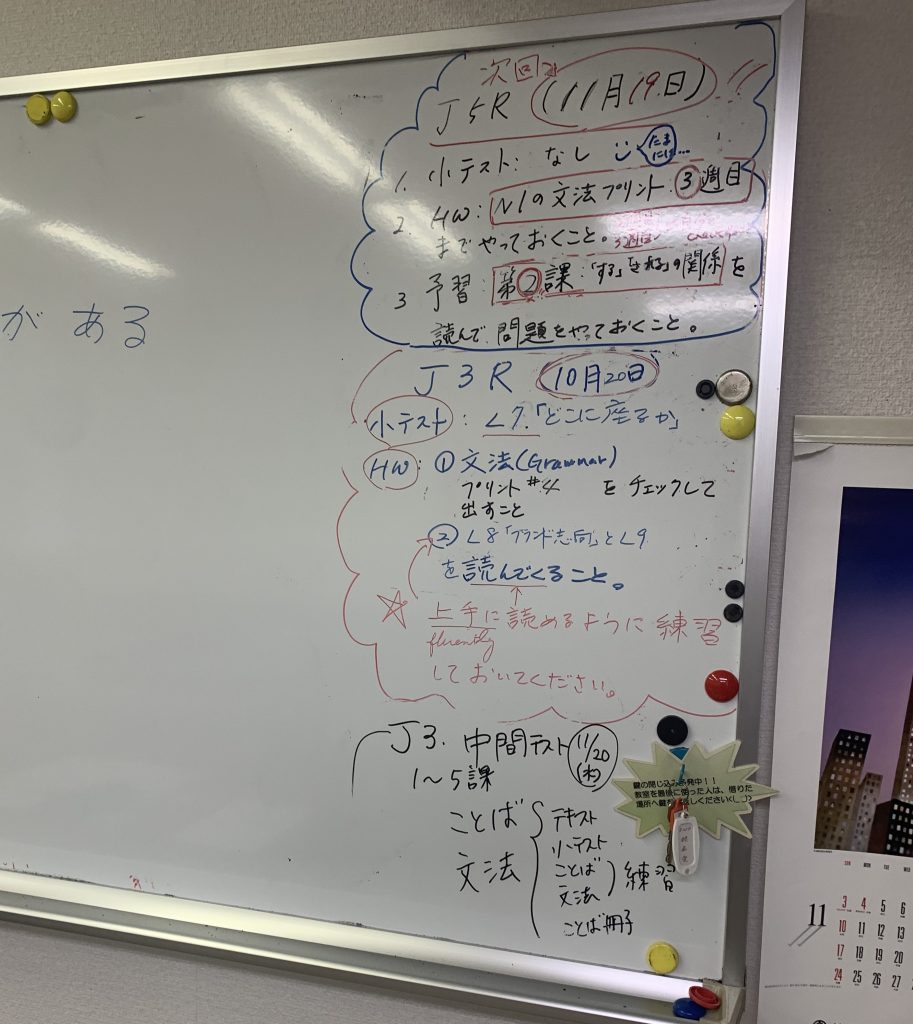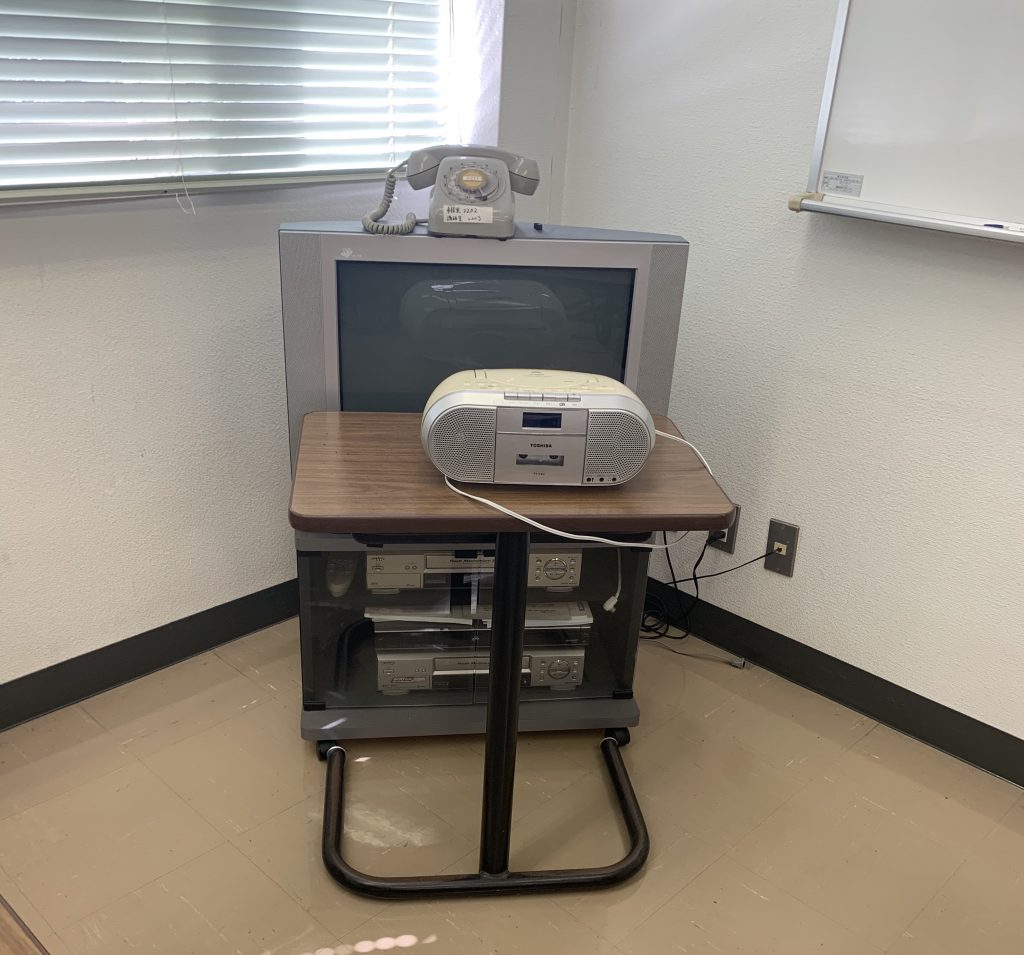A closer look into: Japanese classrooms
23 January 2020Everyone who starts to gain an interest into the Japanese culture will come across how pretty Japanese schools and are drawn in anime. In these Japanese animations, since they are targeted to a younger audience, most of the plots will take place inside or around a school, all the way from primary school throughout university. The most popular romantic animations though, are set up in high schools.
And it is no wonder that many students who have the opportunity to study abroad in Japan will take the opportunity to record a video vlogging their daily life in these schools and perfectly squared classrooms. And so, I have decided to contribute to this, explaining my own experience so far.
Firstly, in the University of Kitakyushu, no one takes their shoes off when they enter the building. That rule applies only until high school level.
I study mainly in the building number 2, where the International Exchange Centre is located. In building number 2 where all of us international students study Japanese language from the first to forth period. The remaining of my lectures are in a couple of different buildings, but I will explain further about that in another blog.
In this building the study classrooms are located on the second floor and if we take a look at the picture below we can see the long wide corridor. It is quite clean not only in how tidy it is but also in the lack of decoration. This hall is quite dark so it needs to be lit up even during the day.

Almost all rooms have an average of 10 seats, because the classes tend to be small groups. As for my class, it can vary from 4 to 8 people, since everyone has a different level of language proficiency, thus we come and go depending on what the class is about (speaking, reading, etc.).
Looking at the picture below, these wooden seats are comfortable enough to sit for a few hours but not more than that. The table in front of the seat has a small compartment below, almost like a hole where you can store your extra notes or stationary during the class. I find that very useful although it is easy to forget things there after the class has ended. I should also mention that that small compartment makes it quite uncomfortable to sit sometimes, for my western standards. Since it does not let you cross your legs under the table you end up awkwardly shifting during the lecture to find a comfortable position.

If we look to the front of the classroom we will find a classic white board, a big wall clock and a calendar. Teachers actually will cross out the days on this last one or mark some important days on it, such as the dates of upcoming exams or holidays. The long table will be used by the teacher, who will bring their own textbooks, stationary and working materials with them at every class, and then leave with them at the end.

In the right side of the board teachers will write down the homework and reminders of upcoming tests for the different classes. These notices will remain here and will be erased after the completion of each task, then they will be replaced with new ones. Meaning that there will always be something to study. I wrote a brief translation model under the picture below.

“11月19日 ” stands for “November 19th”
1. Small test on the use of なし (nashi)
2. Homework: Kotoba and Grammar for Level N1

Another thing worth mentioning is how straight-forward finding your classroom is. Each room will have the notices we see on the picture above outside. The first number indicates the floor number, followed by a dash and then the actual room number. However, in Japan Ground Floor is actually floor number 1, so in this case floor 3 in Japan would be floor 2 in the UK. Below this number there will be the type of room it is in both English and Japanese.

And lastly, this last picture is a proof that maybe Japan is not as modern as it seems to be portrayed in science fiction movies filmed in Tokyo, as for in the year 2020 they still use cassettes, CD players and old phones. And before you ask, yes, that phone does work, I saw one of my teachers make a call on it once and even she was surprised that it was still working.
As for the tv, we have not had the opportunity to use it yet but the CD player we use at least twice a week for listening practices.
And that is all for today!
Coming up next: timetables and clubs !
- January 2026
- December 2025
- November 2025
- October 2025
- September 2025
- August 2025
- June 2025
- May 2025
- April 2025
- March 2025
- February 2025
- January 2025
- November 2024
- September 2024
- August 2021
- March 2021
- January 2021
- December 2020
- October 2020
- April 2020
- March 2020
- February 2020
- January 2020
- December 2019
- November 2019
- October 2019
- September 2019
- August 2019
- July 2019
- May 2019
- March 2019
- February 2019
- January 2019
- December 2018
- September 2018
- August 2018
- July 2018
- June 2018
- May 2018
- April 2018
- March 2018
- February 2018
- January 2018
- December 2017
- November 2017
- October 2017
- September 2017
- August 2017
- July 2017
- June 2017
- May 2017
- April 2017
- March 2017
- February 2017
- January 2017
- December 2016
- November 2016
- October 2016
- September 2016
- August 2016
- July 2016
- February 2016
- October 2015
- September 2015
- August 2015
- May 2015
- March 2015
- February 2015
- January 2015
- December 2014
- November 2014
- September 2014
- August 2014
- July 2014